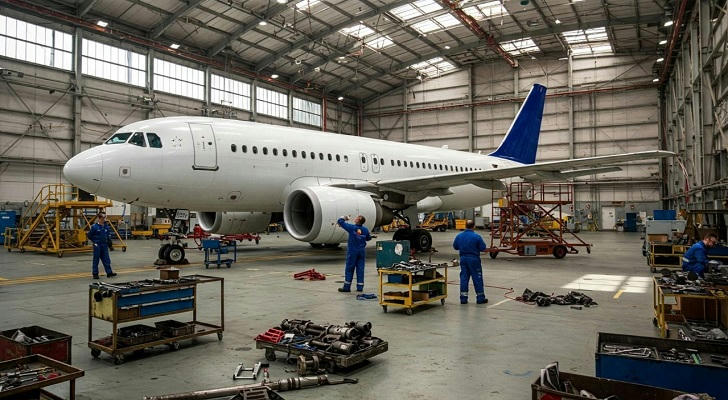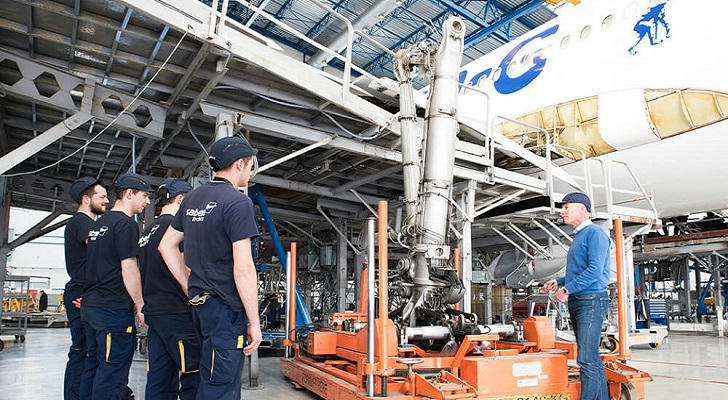From Hangars to High-Tech: How to Start Your Career in Aircraft Maintenance
In today’s world of global travel, e-commerce logistics, and military readiness, one career quietly ensures it all runs smoothly: the Aircraft Maintenance Technician (AMT). These highly skilled professionals work behind the scenes, inspecting, repairing, and maintaining aircraft to keep the skies safe.
If you’re detail-oriented, hands-on, and looking for a stable, high-responsibility career with room to grow, this could be your calling. Whether you’re a high school graduate, a military veteran, or someone looking for a skilled trade with real impact, read on to learn more about this in-demand career.

What Does an Aircraft Maintenance Technician Do?
Aircraft Maintenance Technicians (sometimes called aviation mechanics or aircraft mechanics) are responsible for:
Inspecting aircraft systems and components
Diagnosing mechanical or electrical issues
Replacing defective parts
Conducting routine and scheduled maintenance
Documenting repairs and maintenance logs
Ensuring compliance with FAA safety regulations
Depending on the job setting, they may specialize in:
Airframe Maintenance (body of the plane)
Powerplant Maintenance (engines and propulsion systems)
Avionics (navigation, communications, radar, etc.)
Most AMTs work at airports, repair stations, airline hangars, or with the military and aerospace contractors. Some even travel with aircraft fleets as “on-call” specialists.
Industry Outlook: Why the Demand Is Growing
The aircraft maintenance field is not just holding steady—it’s expanding fast.
According to the U.S. Bureau of Labor Statistics:
There were more than 160,000 aircraft mechanic and service technician jobs in the U.S. as of 2023.
Employment is projected to grow steadily through 2032, with over 10,000 new openings each year due to retirement and increased air traffic.
The post-pandemic airline recovery, boom in private aviation, and growing space/aerospace tech sectors are all driving demand.
Additionally, Boeing’s 2023 Technician Outlook estimates that more than 600,000 new maintenance technicians will be needed globally over the next 20 years. That’s a massive opportunity for anyone entering the field now.
How Do You Become an Aircraft Maintenance Technician?
Step 1: Education
Most technicians start with an FAA-approved Aviation Maintenance Technician School (AMTS), which offers programs in:
Airframe Certificate
Powerplant Certificate
Or a combined A&P (Airframe and Powerplant) program
Programs usually take 18 to 24 months, offered through:
Technical colleges
Community colleges
Aviation-focused trade schools
You’ll learn hands-on skills in hydraulics, engines, electronics, composite materials, and aviation safety standards.
Step 2: Certification (Required by Law)
To work on civilian aircraft in the U.S., you must be certified by the Federal Aviation Administration (FAA). Most employers require the full A&P certification.
FAA Certifications:
| Certification | Focus Area | Requirements |
|---|---|---|
| Airframe | Aircraft structure, landing gear, hydraulics | 18 months of training or experience |
| Powerplant | Engines, fuel systems, propellers | 18 months of training or experience |
| A&P Certificate | Combined | 30+ months of training or completion of AMTS |
You must also pass written, oral, and practical exams for each certificate.
For those with military aviation maintenance experience, military-to-civilian pathways allow you to test without attending AMTS.
Training Programs and Schools
FAA-approved schools are located across the U.S. and vary in length, cost, and curriculum. Well-known programs include:
Spartan College of Aeronautics and Technology (multiple states)
Pittsburgh Institute of Aeronautics (PA, OH, SC, WV)
MIAT College of Technology (TX, MI)
Aviation Institute of Maintenance (multiple campuses)
Community colleges like Broward College (FL), Salt Lake Community College (UT), and San Bernardino Valley College (CA)
Many programs also offer career services, job placement, and support for VA education benefits.

Who Should Consider This Career?
Aircraft Maintenance is ideal for people who:
Enjoy hands-on work and solving mechanical problems
Have strong attention to detail and safety
Prefer a structured environment
Like working independently or on small technical teams
Want a career with stability and travel options
This field also attracts veterans, career changers, and recent high school grads who want to enter the workforce quickly with meaningful, high-skill work.
Career Paths and Specializations
After earning your A&P certification and gaining experience, you can specialize or move into roles such as:
Avionics Technician
Inspection Authorization (IA) Mechanic
Aircraft Maintenance Supervisor or Manager
Technical Instructor or FAA Inspector
Corporate Jet Technician
Aerospace Manufacturing Technician
Some AMTs even pursue private contracting or overseas work, especially with airlines and global logistics companies.
Real-World Impact
Aircraft Maintenance Technicians are crucial to aviation safety. Every time a plane takes off safely, it’s thanks to the thorough work of the maintenance crew. Without them, travel, commerce, and military operations would grind to a halt.
A career in aircraft maintenance isn’t just about fixing machines—it’s about keeping lives safe and industries moving.
Final Thoughts
If you’re looking for a skilled trade that offers hands-on work, industry respect, and long-term growth, becoming an Aircraft Maintenance Technician might be the perfect fit. Whether you're starting from scratch or transitioning from military service or another trade, the path is clear—and in demand.
In just under two years, you could be part of a critical workforce keeping the world in flight.
